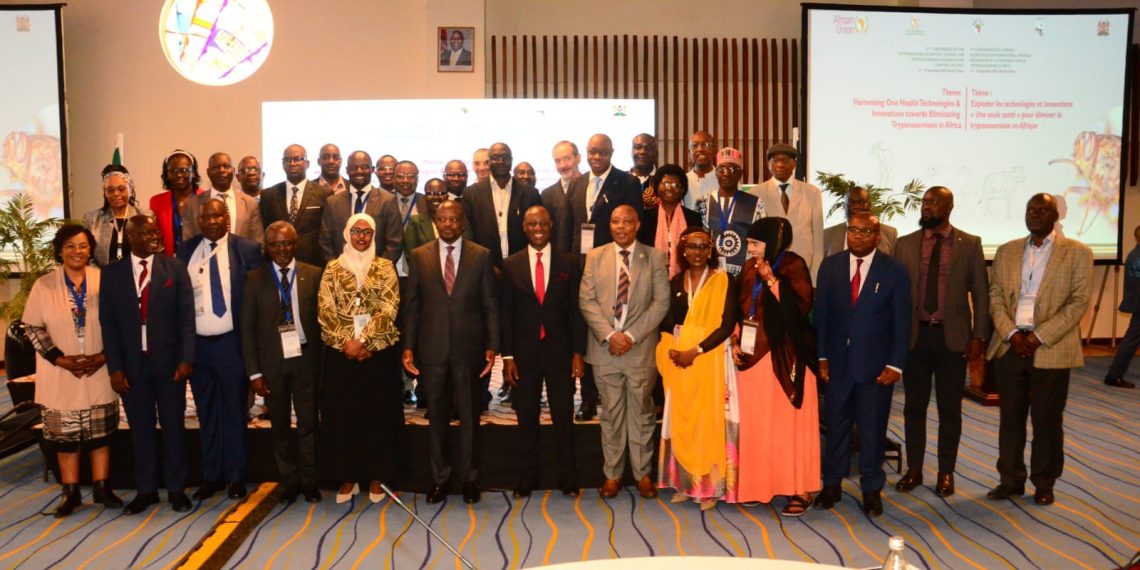Africa’s livestock sector is poised for a significant transformation as the African Union Inter-African Bureau for Animal Resources (AU-IBAR) spearheads a comprehensive continental strategy to eliminate and eventually eradicate Animal African Trypanosomiasis (AAT), a devastating parasitic disease, between 2026 and 2035.
Transmitted by the tsetse fly, AAT, often called “sleeping sickness” in humans, inflicts an enormous economic toll on the continent, estimated in the billions of dollars annually due to reduced yields and animal mortality.
According to Dr. Joseph Magona, a consultant at AU-AIBAR leading the Animal African Trypanosomiasis strategy’s development said that the harmonized, continent-wide approach is critical because previous campaigns by countries and international organizations have been largely uncoordinated.
The disease severely undermines agricultural productivity by reducing milk and meat yields, weakening draught power, and is a significant contributor to poverty and food insecurity, particularly in pastoralist communities.
Dr Magona, was presenting at the 37th general conference of the international scientific council for trypanosomiasis research and control (ISCTRC), in Nairobi.
The strategy aims to overcome persistent challenges, including fragmented institutional coordination a lack of synergy between veterinary, medical, and environmental sectors and inadequate, unsustainable funding that heavily relies on donor support.
Dr. Huyam Salih, Director of AU-IBAR, highlighted the scale of the crisis 38 out of 55 African countries are affected, with 50 million cattle at risk, leading to an annual death toll of 3 million.
The direct losses alone (from reduced production, treatment, and vector control) are estimated at $1.2 billion annually, while the total economic impact on agricultural production across tsetse-infested regions is a staggering $5 billion per year.
The 10-year strategy is built upon five core pillars designed to drive integrated action, Advocacy and Communication, Coordination and Collaboration, Capacity Development, Governance, Resource Mobilization.
Dr. Magona emphasized that successful efforts have consistently combined treatment of animals with vector control. The new roadmap seeks to replicate this integrated approach at scale, building on tangible progress seen in regional collaboration and advances in vector control technology and diagnostics.
He said that despite the promising trajectory, the path to eradication faces several hurdles such as suboptimal drugs including fake and counterfeit products and diagnostic tools that are not always field-friendly or affordable.
“There is also inadequate community involvement, where control strategies often overlook the lived experiences and knowledge of livestock keepers.”
He also noted that climate change and land-use shifts are altering tsetse distribution, complicating control efforts.
The emergence of parasite resistance to drugs and insecticide resistance in tsetse populations poses a growing threat.
To power the fight, Dr Magona said, the strategy places governance and resource mobilization at its heart, calling for increased investments from governments, donors, and the private sector based on innovative and sustainable models.
“Governments are urged to embed trypanosomiasis control within national development plans, food security strategies, and climate resilience frameworks.”
The disease’s impact is widely felt. Kenya, for instance, is one of the affected nations, with approximately 23 percent of its landmass infested, impacting over 70percent of its livestock population in the rangelands.
Mutahi Kagwe, the Kenyan CS Ministry of Agriculture and Livestock Development, estimates the annual loss in Kenya alone due to the tsetse fly and trypanosomiasis (T&T) is around $143 million.
He stressed the need for cooperation, noting that the challenge “transcends boundaries, sectors and disciplines,” and called for the harnessing of data-driven technologies to inform control efforts.
While the focus is on animal health, AAT is closely linked to Human African Trypanosomiasis (HAT). Dr. Salih noted that while HAT cases have drastically reduced from 28,000 in 1999 to 583 in 2024 (with 6 million people exposed to the risk), this success reflects decades of coordinated surveillance and control efforts. Sustained action in the animal population is key to maintaining this progress in public health.















